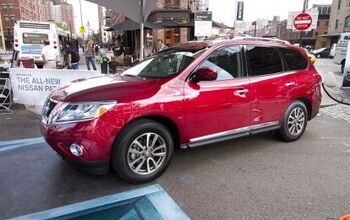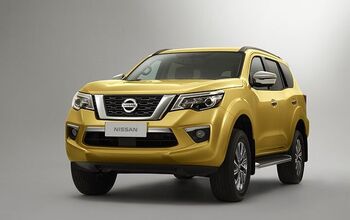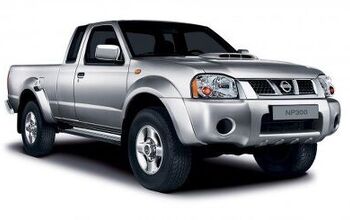Nissan: Next Frontier Will Be Body-on-Frame

At a recent Nissan truck and SUV event in Carmel, a senior Nissan rep indicated there is zero chance the Smyrna, Tennessee based operation will alter its winning mid-size pickup formula.
When asked about the prospects of a unibody Frontier, Dan Passe, Senior Manager of Nissan Brand Communications, laughingly responded, “We don’t normally comment on future product, but a unibody Frontier is not happening.”
Honda is encountering strong demand for its recently launched, second-generation unibody Ridgeline, but Nissan will not follow Honda down the dedicated lifestyle truck path.
The Frontier is in its 11th year and short on refinement, but it is a real success story.
Midsize truck sales are surging, accounting for 17 percent of the overall pickup market, versus 14 percent in 2015. Ridgeline aside, which was all but unavailable in 2015, no mid-size pickup is pacing for stronger growth than Frontier. The aging truck is tracking up 34 percent over 2015 and will likely move 94,000 units this year, topping its previous 80,000 unit high-water mark set in 2006.
Why mess with success?
Building on a winner and not battling an increasingly dynamic segment to carve out a niche for a fundamentally altered Frontier is Business 101. But developing a product strategy for Frontier that balances Nissan’s portfolio strategy, CAFE compliance, and profitability is no small task.
Honda elected to continue with a unibody architecture hosting a single cab and bed configuration. And at a glance, the Ridgeline benefits massively. It offers a car-like ride and 21 miles per gallon in combined driving, versus 17 mpg for the current Frontier. A similar approach for Nissan would certainly net similar refinement and mileage. Unibody architecture may also appeal to bean counters, as a unibody truck could ride on an existing architecture, such as Nissan’s ubiquitous D platform that underpins Pathfinder, Murano, and others.
However, a deeper look reveals that an updated Frontier can deliver competitive fuel economy without alienating traditional Frontier owners, commercial customers, or the Nissan finance department.
If we use the new Toyota Tacoma as a fuel economy proxy for the next-generation Frontier, it becomes clear that a traditional body-on-frame truck can deliver 20 mpg in combined driving. Moreover, if Nissan employs the global Navara’s platform, which has been in production since mid-2014, it can mitigate the significant cost associated with developing an all-new pickup.
Nissan dubbed 2016 its Year of the Truck, a term that might apply industry-wide. Nissan launched the new segment-defying 2016 Titan XD in late 2015 and followed up last month with its all-new Titan half-ton and Infiniti QX80/Patrol-based Armada. Next up for Nissan, a new CUV announcement ( Kicks anyone?), which will likely be followed by the new Frontier.
And the automakers believe there is more growth on the horizon.
Ford is investing in reprising the Ranger. A Wrangler pickup will soon be a reality. And even Mercedes is taking an interest in the segment.
We look forward to the new body-on-frame Frontier.
[Image: Nissan]

Twenty year auto industry professional. Currently CEO at Turbo International, the premier American manufacturer of OEM replacement turbochargers for the global aftermarket.
More by Seth Parks
Latest Car Reviews
Read moreLatest Product Reviews
Read moreRecent Comments
- Shipwright As my Avatar shows I had an '08 GT 500, Grabber Orange convertible. I now own a '12 GT 500 Kona Blue coupe.
- ArialATOMV8 I tend to prefer more amusing colors when picking out a car (if possible). My 2017 Lexus RX is painted in a Nightfall Mica (Dark Blue) and I really dig the look. In the dealership it stands out compared to the regular tame blacks, silvers and whites. Soon I may be at the point to afford a new car and when I do, I'll do my part and spec/hunt for an allocation of a vibrant color.
- Tassos Tim is not that good with colors.The bright "pink" is not pink, but FUCHSIA. Both colors may look good on a woman's sweater, but not on steel panels.
- Tassos While I was a very satisfied owner of a much earlier Accord COupe 5 speed (a 1990 I owned from 1994 to 2016), I don't like the exterior styling of this one so much, in fact the 2017 sedan looks better. Or maybe it sucks in white. The interior of my 1990 was very high quality, this one looks so-so. The 157 k miles were probably easy highway miles. Still, Hondas are not Toyotas, and I remember the same service (like timing belt replacement) back then cost TWICE for an Accord than for a Camry. Add to this that it has the accursed CVT, and it's a no. Not that I am in the market for a cheap econobox anyway.
- 3-On-The-Tree My 2009 C6 corvette in black looks great when it’s all washed and waxed but after driving down my 1.3 mile long dirt road it’s a dust magnet. I like white because dust doesn’t how up easily. Both my current 2021 Tundra and previous 2014 Ford F-150 3.5L Ecobomb are white






















![Nissan Navara Previews Next Frontier [Update: More Pictures]](https://cdn-fastly.thetruthaboutcars.com/media/2022/06/30/8662331/nissan-navara-previews-next-frontier-update-more-pictures.jpg?size=350x220)











Comments
Join the conversation
Why not use their global platform, the Navara? Their partner, Renault, is using it to launch the Alaskan. Surely if they can spread the engineering over enough volume they can be competitive?
Why does't Nissan just manufacture the Navara in Mexico to US standards. I would think that there would not be a lot of difference in the standards and if so then it is time for the developed countries to agree to Global safety, emission, and mileage standards. Toyota should replace the Tacoma with the Global Hilux. As for Mitsubishi a rebadged Navara might be just what they need. It makes financial sense to use the same platform in all countries because the development cost has already been paid and any future development costs can be recouped quicker. Both Nissan and Toyota have proven global platforms. If Ford eventually decides to offer a new Ranger in the USA then why not use the Global Ranger, a proven truck.